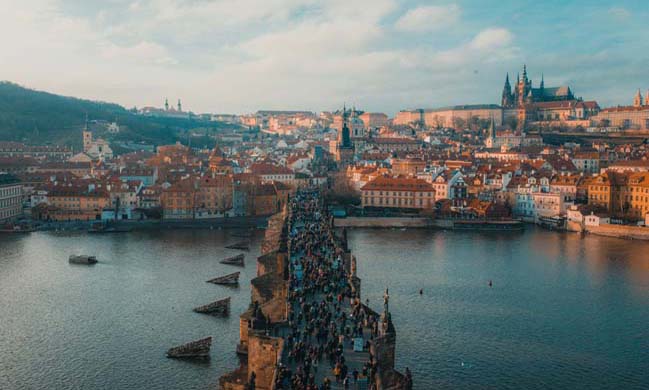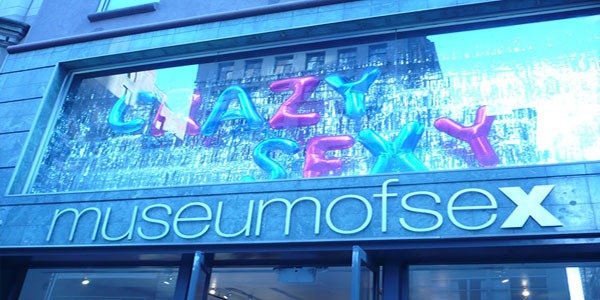The magnificent combination of big city and nature reserve of beautiful parks and green spaces, and all the things to do in Oslo, make it a must-see destination. The capital of Norway is located between the fjord of Oslo and green hills full of forests so that in 2007 Oslo was named the second greenest and most environmentally friendly city. If you take a walk in the city centre, you’ll find a beautiful park to relax in, and with just 10 minutes by boat, you can discover the beautiful beaches of Oslo Fjord. But Norway’s capital is also full of attractions, museums, art galleries and shopping.
And remember: you can’t leave Oslo without first getting to know its painter par excellence, Edvard Munch. The paintings of this tormented and brilliant artist are on display at the Munch Museum and the National Gallery. To admire the artistic sense of this city you don’t have to enter a museum. Vigeland Park is one of the most popular tourist destinations in Oslo and houses 212 statues by sculptor Gustav Vigeland. We suggest you the things to do in Oslo you absolutely must not miss!
Things to do in Oslo: Akershus Castle in Oslo
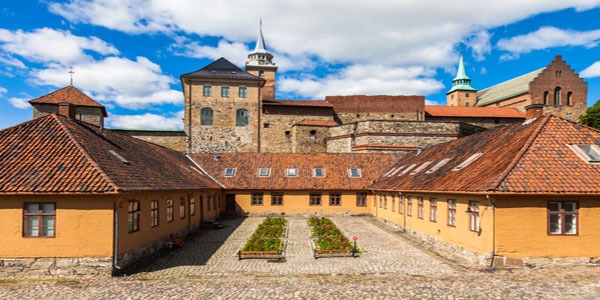
Situated on the promontory overlooking Oslo Fjord, the proud fortress of Akershus is the main architectural symbol of the Norwegian capital. Built under the reign of Håkon V at the end of the 13th century to protect the city from invaders (as evidenced by the four defensive towers), in the first half of the 17th century the medieval building was transformed into a Renaissance palace at the behest of Christian IV.
During the 1700’s, the structure began to show some signs of decay but the renovation work was started only in 1899. Visiting this castle is one of the first things to do in Oslo. Today the complex, while remaining a military installation, has assumed the appearance of a park often used for theater performances and outdoor concerts during the summer.
Read also: The best islands to visit in Maldives
In the Akershus Festning there is the old castle (Akershus Slott) whose sumptuous rooms are now used by the government as reception rooms. The royal chapel houses the Mausoleum of the Kings of Norway. The Norwegian Resistance Museum and the Armed Forces Museum are also located within the fortress walls. The view over the port and the city is beautiful. Do not miss the change of Guard that takes place every day at 13:30.
What to do in Oslo: Visit the National Gallery
One of the most popular things to do in Oslo is undoubtedly visiting the National Gallery, in Norwegian the Nasjonalgalleriet. This gallery, which is part of the National Museum’s museum complex, houses the largest collection of Norwegian art from the Romantic period to modern works from the 19th century to the Second World War. Of great interest is the exhibition of many of Edvard Munch’s masterpieces, including a version of the famous Scream.
Not only works by Norwegian artists in the National Gallery, but also by many important European painters such as Picasso, Gauguin and El Greco. Don’t miss the masterpieces of the Impressionists Monet, Manet, Renoir, Degas, Cézanne and Matisse. There is also a remarkable collection of sculptures, including Renoir’s “Triumph of Aphrodite” and Degas’ “Morning Toilet”. The Gallery also hosts temporary exhibitions of historical and contemporary art.
Read also: The Best places to visit in Berlin
Visit Oslo Cathedral
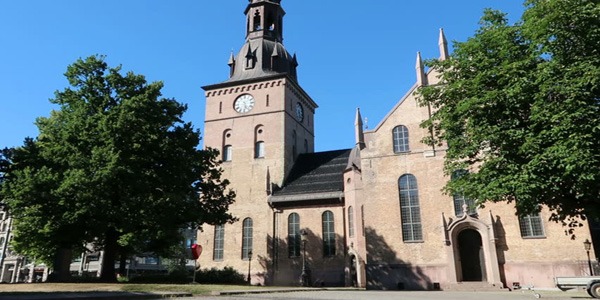
Visiting the wonderful Church of Our Savior, consecrated in 1697 and restored to its original (baroque) appearance in 1950, is undoubtedly among the things to do in Oslo. Especially for its beautiful stained glass windows, the work of Emanuel Vigeland, brother of the most famous Gustav, and for the beautiful ceiling painted with scenes from the New and Old Testaments.
The valuable altarpiece, depicting the Last Supper and the Crucifixion, was made in 1748 by Michael Rasch and was a distinctive symbol of the church. It was later moved to several cities in Norway, until in 1950 it was returned from the church of Prestnes in Majorstuen. If you are wondering what to do in Oslo, you can attend one of the suggestive concerts that sometimes take place inside the Cathedral. The arches and arcades at the back of the Cathedral (Le Basarhallene, bazaar rooms) dating from 1858, which are located at the back of the cathedral, now house characteristic shops and markets.
Things to do in Oslo: A Boat trip
The boat trip from the Oslo Fjord is another must-see stop on a city tour. Of course, the time of year is very important. To fully enjoy some things to do in Oslo like the attractions and beaches of Hovedøya, Gressholmen, Langøyene etc.. you must come during the summer. Of course, even in other seasons the tour of Oslofjord retains its charm, but it is undoubtedly the summer months that allow the full knowledge of the territory with the possibility of sailing from one island to another. In addition to moving independently there are also organized excursions, certainly preferable if the time available is short.
Read also: Best things to do in Las Vegas
Explore Vigeland Park in Oslo
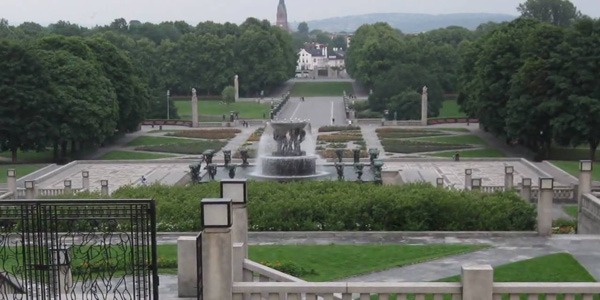
You will probably go to Vigeland Park, the heart of the very popular Frognerparken, distractedly, just because it is indicated by the guide, without having any idea why it is among the things to do in Oslo.
As soon as you enter the park you will not believe your eyes: statues of disrespectful children, of embraced lovers and thoughtful old people, who will surprise you with their exceptional beauty. Vigeland Park is a real open-air museum of the masterpieces of the most famous Norwegian sculptor Gustav Vigeland, with 212 sculptures in granite and bronze all to admire and photograph.
Read also: The Best Cities To Live In Australia
The most famous statues are the Sinataggen, the “Little Hothead”, which depicts a decidedly angry child clapping his feet, and the Monolitten, a 17-meter high column where 121 human figures cling to each other, almost as if they were fighting to reach the top of the obelisk. We recommend visiting the park at sunset, when the shadows create spectacular plays of light that seem to gently caress the sculptures.
What to do in Oslo: Museum of Viking Ships
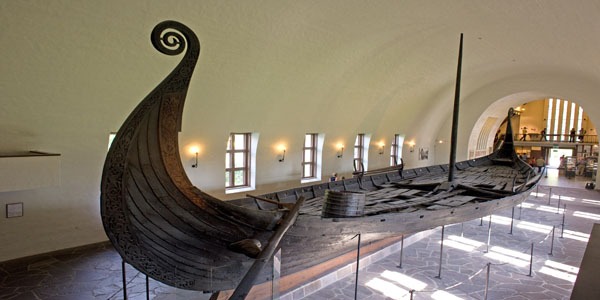
Even if they are stationary and do not advance threateningly into the sea, the dark and refined figures of the Viking ships kept in the Museum incite some fear and awe, so much so that visitors find themselves talking in a voice without even understanding why. One of the best things to do in Oslo is to visit this museum.
The funeral boats on display at the Vikingskipshuset are imposing and majestic and tell a piece of history of the ancient people of sailors. The ships on display, made of oak, were buried more than 1100 years ago as they were used as giant coffins for the nobles next to which was placed everything they thought they might need in the afterlife, from jewelry to tapestries (many artifacts found are on display in the museum).
Read also: The best music festivals to visit
According to what the Vikings believed, the ships should have transported their owners, members of the royal family, into the world of the dead. The most solemn of all the ships is the Oseberg, which required as many as 30 rowers, decorated on the stern and bow with sculptures depicting dragons and snakes. The most solid is the Gokstad, the most significant and important example of Viking ship. Of the third ship, Tune, only a few fragments and planks remain. The three ships were found in three large funerary mounds on the Oslo Fjord and brought to light in the second half of the nineteenth century.
Things to do in Oslo: Bygdøy Peninsula
Only 15 minutes by ferry (from April to October) or 20 minutes by bus separate Oslo from the peninsula of Bygdøy, a residential area where most of the wealthiest citizens of the already rich capital live. The quality of life is high in all respects, not least in tourism. It is no coincidence that this is where you will find two of the most important museums in the city.
We are talking about the Folklore Museum and the Museum of Viking Ships. What to do in Oslo? Visit these two great tributes to the Norwegian “genius loci”. The first is an open-air museum with the reproduction of more than one hundred traditional buildings from all over the country. The second is home to three Viking ships found during an excavation campaign between the 19th and 20th centuries in the Oslofjord region, south of the capital.
Read also: The best places to visit in New Zealand
These vessels, dating from the ninth century had been landed and used as tombs for some of the most prominent members of this proud community of sailors. Together with the men, their trousseaus (jewellery, food, tools, etc.) were buried and, centuries later, a very interesting museum space was created. A precious testimony (together with the faithfully reconstructed ships) of the symbolic and material universe of this civilization that dominated the North Seas for over three centuries (from the 8th to the 11th century).
Visit TusenFryd Amusement Park in Oslo
Oslo is not only rich in art, museums and monuments, but also knows very well how to entertain you. The TusenFryd Amusement Park is a beautiful amusement park, about 20 km from the city center, much loved by both adults and children.
In the park you can find a lot of interesting things to do in Oslo and enjoy the many exciting attractions, a water park, the BadeFryd, and an area dedicated to children. The SpeedMonster, an exciting rollercoaster inspired by racing cars, deserves special attention: just think that it will take you from 0 to 90 km/h in just 2 seconds and reach zero gravity 12 times for each race. After you have walked through the streets of Oslo, all you have to do is end your visit with a pleasant “thrilling” pastime.
Read also: What to see in South Africa
Go to Opera and Ballet Theatre in Oslo

A futuristic construction in glass and white Carrara marble on the banks of the Oslofjord, the Opera House emerges from the sea like an enormous block of sparkling ice. If you are in Oslo and don’t know what to do in the Norwegian capital, you must visit this incredible buildibg!
Inaugurated in the spring of 2008, the structure intended to house the Norwegian Opera and Ballet has already become an icon of the city, a symbol of the project to redevelop the seafront in Oslo. The monumental work, designed by Norwegian studio Snøhetta and costing around €600 million, is a bold experiment in urban architecture, as demonstrated by the large inclined plane that allows access to the theatre from the city and then climbs to the roof from where visitors can admire the view of the city and its fjord.
Great definition of the details and a refined choice of materials also characterize the interiors (foyers and theatres) in which the Baltic oak wood dominates. The building has 1,100 rooms, including a large horseshoe-shaped auditorium with 1369 seats, the stage of which measures several thousand square meters, part of which is 16 meters below sea level, the second room (400 seats) and the study (200 seats). To visit the interior of the building you must book (in advance) a guided tour (in English), the atrium and the roof are open to visitors.
Read also: The best places to visit in December
Norwegian Folklore Museum
Located on the Bygdøy peninsula, the Norwegian Folklore Museum is Norway’s largest open-air museum where through reconstructions of rural and urban landscapes, rich collections and many engaging activities, the visitor relives Norwegian cultural history from the Middle Ages onwards.
The museum includes more than 150 buildings from different regions of the country dating from the 17th and 18th centuries and a stavkirke (load-bearing pole church) built entirely of wood around 1200 in the municipality of Gol and transported here in 1885 at the behest of Oscar II King of Sweden. The fascinating museum space is completed by old workshops, craft workshops, carriages, music and folk dances, guides dressed in traditional costumes and even a historical playground. If you want to spend a pleasant day outdoors and discover Norwegian life, arts and traditions, the Norsk Folke Museum is definetly in your list of things to do in Oslo!
What to eat in Oslo

Obviously the typical dishes of Oslo are linked to its ancient and deep seafaring tradition: in this city you can taste different types of fresh fish and seafood specialties that you have never tasted anywhere else.
Don’t miss the famous salmon, to eat smoked or grilled, cod, catfish, herring, shellfish and shrimp, cooked or freshly caught. If you prefer meat, Oslo is not unprepared: you will find elk, reindeer and deer with a strong flavor already but often embellished with a sauce prepared with sour cream. Also worthy of note is the dried meat, which in Oslo takes the form of ham or sausages, perhaps accompanied by the delicious geitost, a sweet cheese made from cow’s and goat’s milk. To better enjoy these dishes, we invite you to taste the delicious local beer and the exquisite Oslo brandy.
Read Also: The best Christmas markets in the world
Where to sleep in Oslo
Oslo offers a wide choice of hotels, bed & breakfasts, farmhouses, hostels and campsites. Most of the bed & breakfasts are located in the city, but some are also scattered in the countryside: pay attention to the signs along the streets, looking for the words rom or husrom.
Another place where you can sleep are the fishermen’s houses, the so-called rorbu. A bit out of the way, these houses are completely independent, with a living room and kitchen in one room, a bedroom and a bathroom. A two-bedroom rorbu costs from 600 NOK up per night and often you have to pay a little more for the towels and linen. Hostels in Oslo belong to two different chains: Hostelling International and VIP Backpackers Resort International, both very welcoming and comfortable.
One bedroom costs NOK 100 to 300 per night, while a double room costs NOK 300 to 600. You’ll find blankets and pillows in the rooms, but you’ll need to bring your own sheets from home or, if you like, rent them at the hostel. Hotels offer discounted rates especially on weekends and in summer: compared to the rest of Europe, prices in Oslo are not very high. Another very convenient solution for your holidays are the farmhouses, located in the western part of Oslo, where you can take care of the animals and do many different activities: fishing, hiking, horseback riding and boat trips.
Don’t forget to visit our home page for more of the best destinations in the world. You can also leave a comment or suggest us a place for our next adventure!



